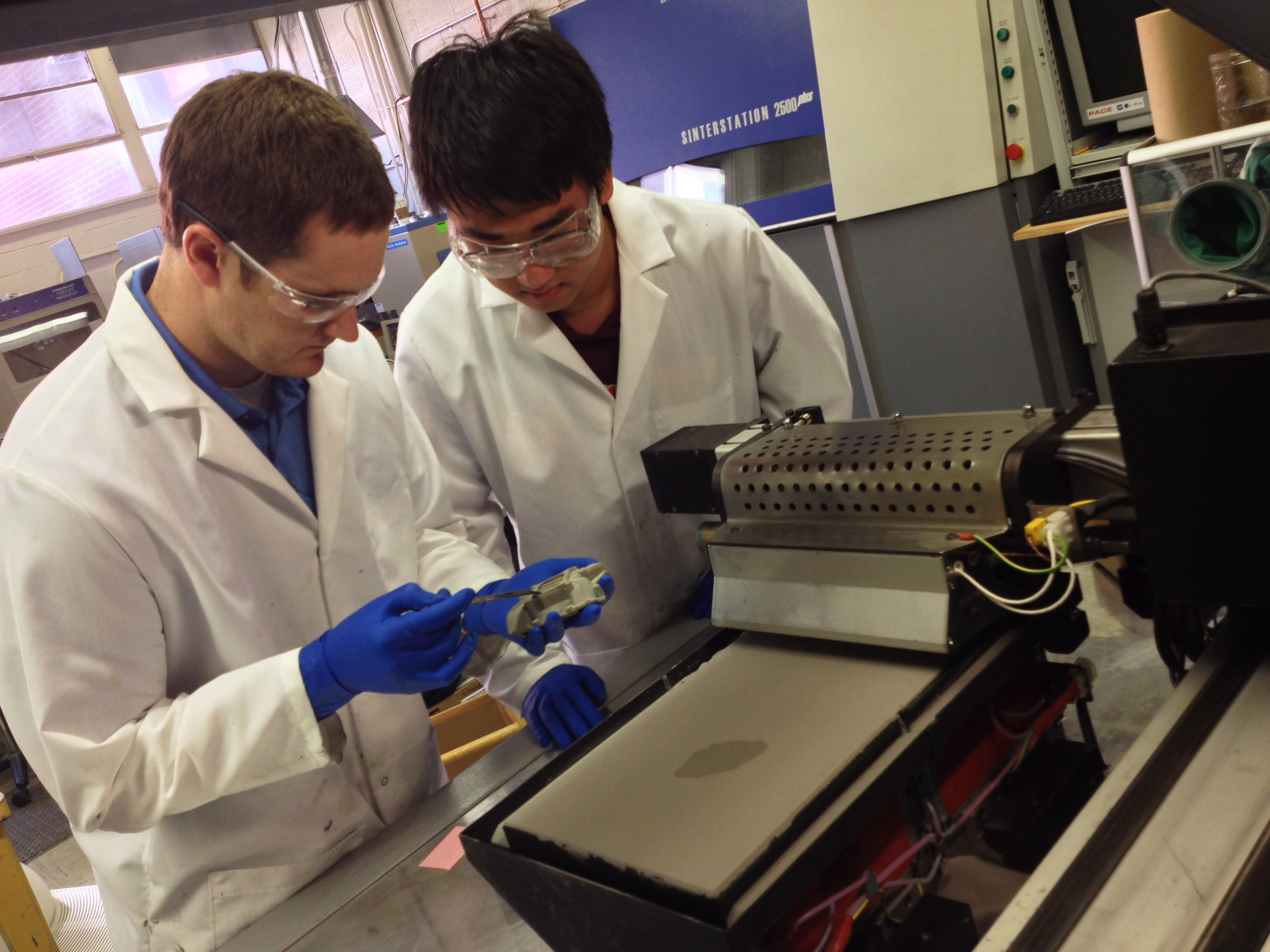Virginia Tech hosting debut student competition to design 3-D printed aircraft, ground vehicles

Virginia Tech will play host to a first-time, university-wide competition for students to deign on-demand, remote-controlled 3-D printed aircraft and ground vehicles.
Up for grabs in the Spring 2014 Additive Manufacturing Grand Challenge that launches March 4: $15,000 in cash prizes, including $3,000 for first prize in each of the air and ground vehicle competitions, and $250 for each team that creates a functional vehicle.
Undergraduate and graduate students, individually or in groups, are invited to participate from across the university, no matter their course of study.
The kick-off meeting for interested students takes place 7 p.m., Monday, March 3 at the Surge Space Building on Stanger Street, Room 118C.
The goal: Build an operational, remotely piloted ground or air vehicle made entirely or almost entirely via 3-D printed, or additive manufacturing, materials, that will allow future deployed military or civilian engineers to fabricate remotely-piloted vehicles while in battlefield or austere environmental conditions, such as the site of a natural disaster to search for survivors or carry out reconnaissance missions.
“This competition is a tremendous opportunity for all Virginia Tech students,” said Christopher Williams, head of Virginia Tech’s Design, Research, and Education for Additive Manufacturing Systems – or DREAMS, for short – Lab, a lead organizer of the competition. He will be spearheading the competition with Al Wicks, associate professor of mechanical engineering and director of the university’s Mechatronics Lab.
“It allows us to showcase to the broader community our students’ talent, ingenuity, and familiarity with emerging technologies such as additive manufacturing,” added Williams, an assistant professor with a joint appointment in the departments of engineering education and mechanical engineering, both part of Virginia Tech’s College of Engineering. “We see this spring’s grand challenge competition as a pilot for a larger, multi-university competition in the coming years.”
“The Additive Manufacturing Grand Challenge combines two emerging technologies, 3-D printing and autonomous systems to challenge and inspire students to team and create innovative solutions for ground and aerial vehicles,” added Wicks. “This competition promises to catapult Virginia Tech to a leadership position in additive manufacturing linked to robotic systems.”
In addition to the DREAMS and Mechatronics labs, the competition is being organized by the Virginia Tech Applied Research Corporation.
“Applied Research Corporation sought to identify and leverage a community of diverse public and private organizations to bring this unique and ground breaking challenge to fruition,” said Jerome Conley, senior research scientist for the corporation. “We are excited about what this event means to the students and the larger community of interests in this growing technology area.”
The Air Force’s Office of Scientific Research is providing the majority of funding for the competition, with other sponsors including the National Defense University’s Center for Technology and National Security Policy. Separately, Maryland-based engineering firm Robotic Research LLC is donating vehicle electronic kits and the nonprofit energy investment Stiefel Family Foundation is providing cash awards.
The challenge, according to organizers, is motivated by a vision of on-demand manufacturing in remote locations via additive manufacturing as civilian and military organizations plan to design shipping containers that contain several 3-D printers. Those printers then can be used by engineers or even lay persons to simply download and print replacement parts, or fabricate novel mission-specific parts on-demand.
Such efforts would take the place of waiting for relief by rescue workers or additional military personnel to arrive, which could be slowed by closed routes due to a disaster or battle conditions.
As part of the competition, to simulate harsh or remote conditions, student teams will be challenged to create a ground or air vehicle using only the raw material of a 3-D printer and a provided standardized, off-the-shelf electronics kit, such as motors, battery, receiver, etc., according to challenge organizers.
At the competition finale -- to be held May 15 on the Virginia Tech campus – student participants will pilot their printed ground/air vehicle around an obstacle course and photograph four different points of interest. Designs will be judged both on their ability to navigate the course -- time to complete mission and number of obstacles cleared -- and their effective use of additive manufacturing -- time to print and assemble, number of 3-D printed parts that comprise the vehicle.
As part of the competition and to provide guidance to teams, Williams and Wicks will be hosting three evening information sessions for students during March, including “Design for Additive Manufacturing,” March 6; Mechanical Systems Design, March 19; and “Mechatronic Systems Design,” March 26.. These sessions will be video recorded and hosted on the competition’s Scholar website for future viewing.
The challenge at Virginia Tech is seen by the Air Force as the starting off point for larger, future competitions at U.S. universities that have established 3-D printing lab programs.
“At the Air Force Research Laboratory, our mission is to lead the discovery, development and integration of affordable warfighting technologies for America’s aerospace forces,” said David Stargel, division chief of Dynamical Systems and Control at the Air Force Office of Scientific Research. “Additive manufacturing is a potential game-changing manufacturing technology for our military platforms. The Air Force Office of Scientific Research is excited to help lead the development and education of our future engineers through this Grand Challenge competition on the design of additive manufacturing.”
Future competitions likely will include high schools, private tech firms, and other hobbyists, as the Air Force seeks to spur a growing engineering workforce in both 3-D printing technology and deployable manufacturing.




